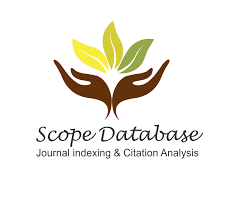Details
SMS Spam Detection Using Machine Learning Approach
Anikait Kapoor
Department of Computer Science and Engineering, Apex Institute of Technology, Chandigarh University, Mohali, Punjab, India
Debavushan Saikia
Department of Computer Science and Engineering, Apex Institute of Technology, Chandigarh University, Mohali, Punjab, India
Ishaan Dhawan
Department of Computer Science and Engineering, Apex Institute of Technology, Chandigarh University, Mohali, Punjab, India
Download PDF http://doi.org/10.37648/ijrst.v14i01.002
http://doi.org/10.37648/ijrst.v14i01.002
Abstract
With the rise in mobile awareness in recent years, the short message service (SMS) industry has generated billions of dollars in revenue. However, this has led to an increase in unwanted commercial advertising or spam sent to regular phones, with parts of Asia having up to 30% of content messages as spam in 2012. One of the challenges in SMS spam filtering, it requires a comprehensive database and the limited usefulness and dialect used in SMS. In this extension, analysts used a real SMS spam database from the UCI Machine Learning store and connected different machine learning methods after preprocessing fake rolex and extracting markup. The results were compared and the main spam filtering algorithms for the message body were distinguished. The final reconstruction using 10-fold cross-validation appeared to have the primary classifier more than halve the overall error rate compared to the best proof in a paper.
Keywords: supervised learning; classification algorithms; feature engineering; natural language processing (NLP); text classification
References
- Press Release, Growth Accelerates in the Worldwide Mobile Phone and Smartphone Markets in the Second Quarter, According to IDC, http: //www.idc.com/getdoc.jsp?containerId=prUS24239313
- Tiago A. Almeida, Jos Mara G. Hidalgo, and Akebo Yamakami. 2011. Contributions to the study of SMS spam filtering: new collection and results. In Proceedings of the 11th ACM symposium on Document engineering (DocEng ’11). ACM, New York, NY, USA, 259-262. DOI=10.1145/2034691.2034742 http://doi.acm.org/10.1145/2034691.2034742
- http://en.wikipedia.org/wiki/Short Message Service
- http://en.wikipedia.org/wiki/Mobile phone spam
- Adaboost, http://en.wikipedia.org/wiki/AdaBoost
- SMS Spam Collection Data Set from UCI Machine Learning Repository, http://archive.ics.uci.edu/ml/datasets/SMS+Spam+Collection
- Scikit-learn Ensemble Documentation, http://scikit-learn.org/stable/ modules/ensemble.html
- T. G. Dietterich. Ensemble methods in machine learning. In J. Kittler and F. Roli, editors, Multiple Classifier Systems, pages 1-15. LNCS Vol. 1857, Springer, 2001.
- SMS Spam Collection v.1, http://www.dt.fee.unicamp.br/∼tiago/ smsspamcollection











